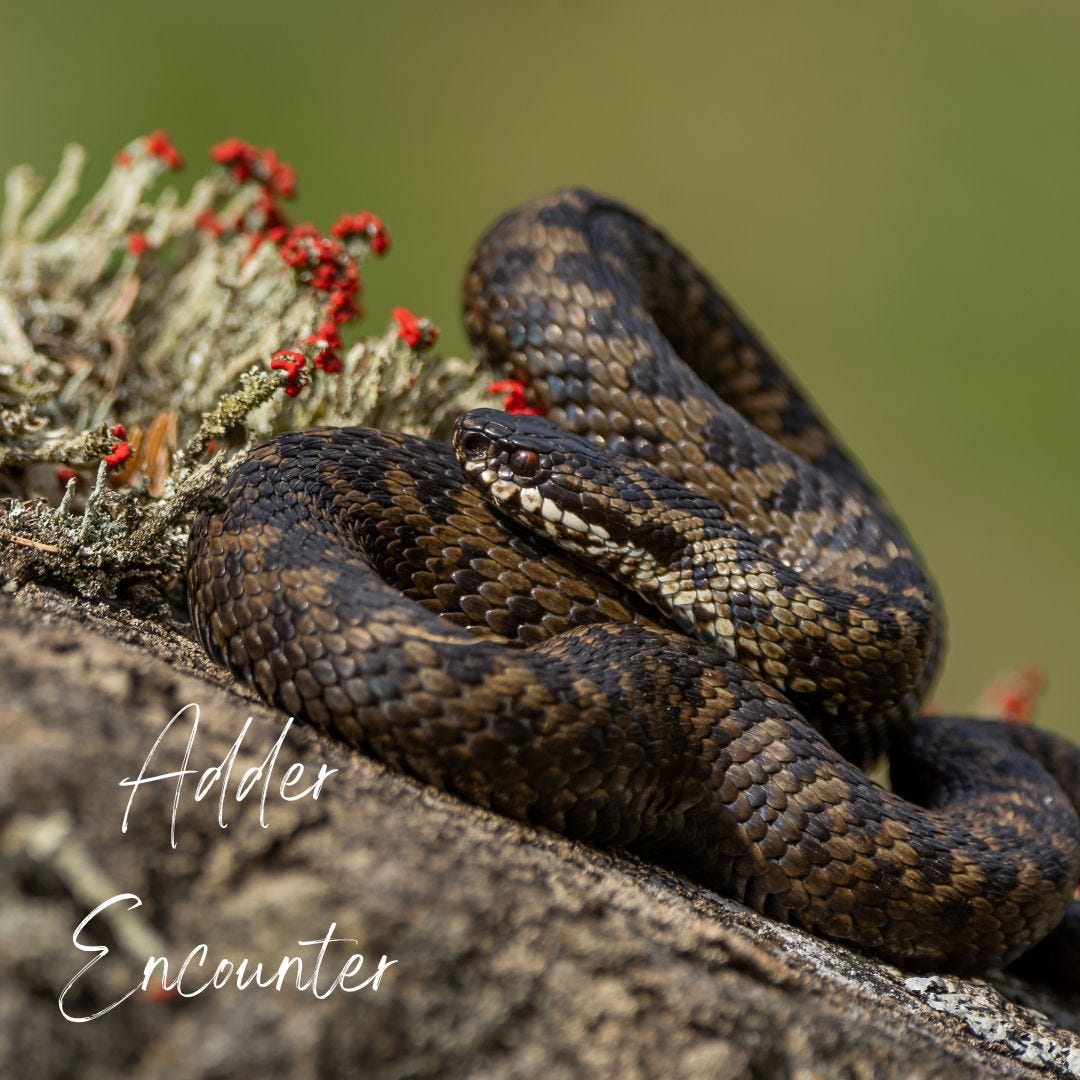Last month my work took me to Seven Sisters Country Park to learn more about the different habitats there: vegitative shingle, chalk grassland, woodland, maritime cliffs, salt marsh, saline lagoon and more!
Seven Sisters Country Park is one of the newest additions to the South Downs National Park and in the last year, with the focus on management for nature, rangers in the park have seen a marked increase in the variety of wildlife present in the landscape there, including some very rare visitors such as the short eared owl.
As we walked along the trail that takes in all of the wonderful habitats I mentioned above, including sweeping vistas out to sea, we could not help but notice the plethora of life around us: kestrels, darters, butterflies, beetles and reptiles!
We were in quite a large group as we walked along the path chatting and pointing out wildlife spots to each other when out of the grass, to our sheer joy, there slithered a tiny baby adder just making her way from one side of the path to the other. It is so rare to see an adder out in the open that we all just had to stop and say hello.
The little adder was very brave and she continued to make her way across the path, stopping only occasionally to give us a warning not to get any closer, until she was safely on the other side. Whilst we were all in awe of her beauty, we were of course respectful of her space and kept our distance hence the zoomed in fuzzy phone photo of our encounter, which I offer you below.
Adders are most active in the spring and summer and they are the UK’s only venomous snake, although it is extremely rare for anyone to be bitten by one as they sense the vibrations caused by your footsteps and hide pretty swiftly if you happen upon one.
Despite being fairly widespread and easily identifiable with their ‘zigzag’ markings, adders are very secretive and so often go unseen. They are not aggressive but if they feel threatened or cornered, they may bite in self-defence. Since 1981, adders have been a protected species.
The famous Selborne naturalist, Gilbert White, observed that the adder emerged from hibernation in March. This observation was also recorded by Rev. J. E. Kelsald, in his book The Reptiles Of Hampshire & The Isle Of Wight. In it he notes …
Keep reading with a 7-day free trial
Subscribe to Cerridwen's Cauldron to keep reading this post and get 7 days of free access to the full post archives.







